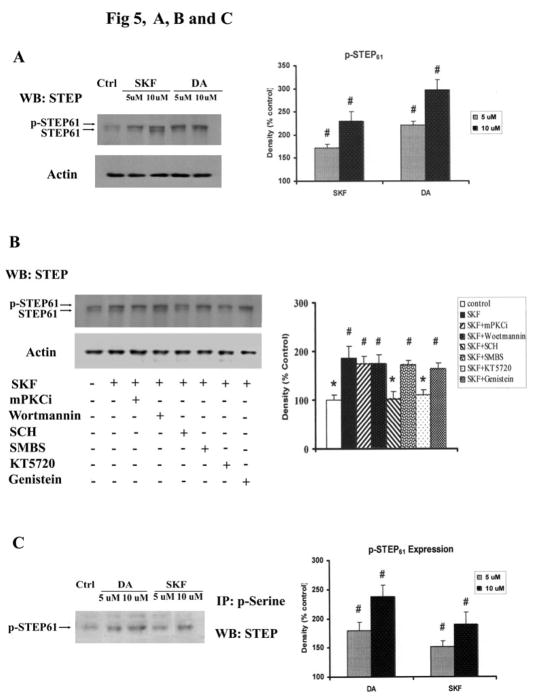Fig. 5. DA and SKF R-38393 caused phosphorylation of STEP via D1 DA receptor and PKA dependent pathway.
A. Neurons were treated for 15 min with 10 μM and 50 μM of DA or SKF R-38393. STEP isoforms were immunobloted as described in Experimental Procedures with a monoclonal antibody against STEP, STEP(23E5). Phosphorylation of STEP (p-STEP) is indicated by the upward shift of the 61-KDa isoform (STEP61). B. Striatal neurons were pretreated for 15 min with vehicle or with the following compounds: mPKCi (1 μM), Wortmannin (1 μM), SCH23390 (1 μM), SMBS (20 μM), KT5720 (1 μM) or Genistein (10 μM) and then treated with 10 μM of SKF R-38393 for 15 min. Immunoblot analysis was conducted as described in Experimental Procedures. C. Neurons were treated for 15 min with 5 μM and 10 μM of DA or SKF R-38393. Immunoprecipitation was conducted by using phosphorylated serine (p-Serine) antibody and p-STEP in immunopellets was assessed by Western blots. In bar graph, blots were scanned for density. Data are expressed relative to control and represented as the average ± S.E.M of three experiments (n=3). In bar graph of B, left lane, p<0.05 (*), represents the result of paired Student’s t test with 4 degrees of freedom for SKF R-38393-treated group; p<0.05 (#), represents the result of paired Student’s t test with 4 degrees of freedom for the corresponding control group.

